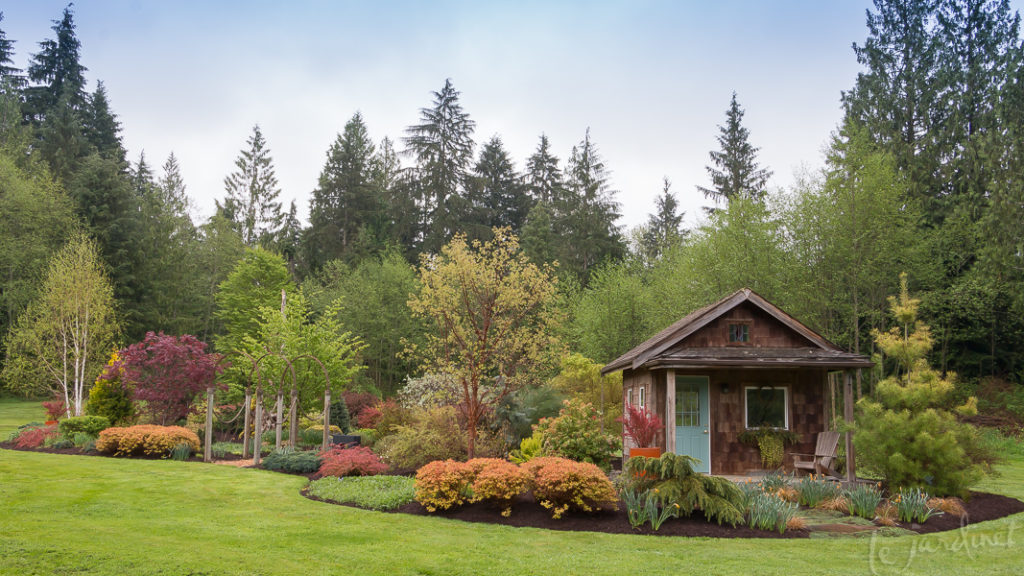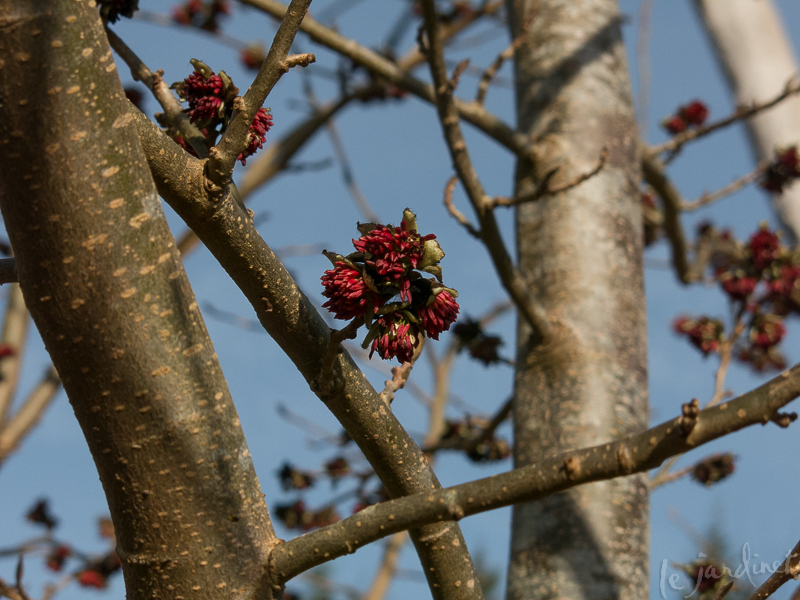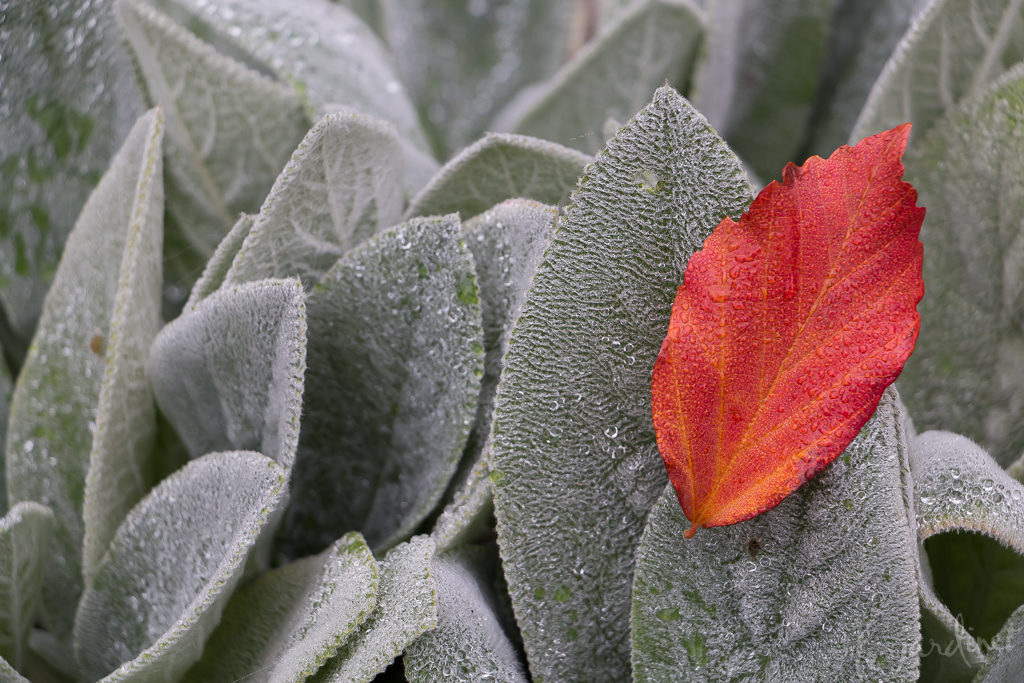One Special Tree – Four Outstanding Seasons

We all want instant gratification in our gardens; plant today – fabulousness tomorrow. At some point most of us have learned the hard way that plants just don’t work to our schedule and we have to wait for the plants to fill in and mature before they really fulfill our vision.
Yet occasionally I come across something that exceeds my expectations and such has been the case with the deciduous tree Ruby Vase Persian ironwood (Parrotia persica ‘Ruby Vase’).
Purchased and planted in 2012, I was attracted by the slender silhouette (as compared to the typical Persian Ironwood (Parrotia persica), that spreads up to 30′ wide) as well as the promise of fall color and winter flowers. I did not expect to be grabbing my camera every few weeks during spring and summer to capture the remarkable kaleidoscopic display of foliage colors, however.
Through the Seasons
Early Spring
Opening a bright, fresh green the leaves are often edged with purple or burgundy.

April 2018: Ruby Vase is directly behind the post and rebar pergola in the middle of this border. The fresh green foliage is a good counterpoint to the emerging copper and ruby tones of nearby trees and shrubs.
Summer

August 2019: the deep plum foliage of Ruby Vase (behind pergola posts) sets off the black eyed Susan's that grow at its base. I repeated the warm hues in the container planting design.
I have noticed significant color variation throughout the summer and even from one year to the next. Typically, by late May the foliage is a blend of rich burgundy, deep purple and dark green, but the proportions of each vary greatly. Regardless, it is always striking and much more colorful than the species.
Fall

Taken today, October 28th 2019, the vivid golden foliage of Ruby Vase lights up the fall garden. It has looked like this for at least a month already!
All I can say is thank goodness for digital photography or this tree would cost me a fortune in film!
Winter
I may have purchased this tree for the foliage but the silhouette, bark and winter flowers add to its ornamental value.
Design Ideas
In my own garden I have it combined with tall burgundy tipped grasses and black-eyed Susan's for a meadow-inspired look. Large mossy boulders and a rusted arbor complete the scene that overlooks an open grassy area and meadow beyond.
Seen from the front the framing is slightly different with a snag playing into the vignette together with golden spirea and many other foliage colors and textures. (The golden locust tree to the right has since been replaced by a contemporary container seen in more recent images e.g. "summer").
As the tree foliage transitions to gold, I especially like its association with the rusted metal of the arbor.
For a completely different look you might prefer to add silver; perhaps giant lambs ears (Stachys ‘Bella Grigio’), or a wormwood (Artemisia).
Vital Statistics
Mature size: 28’h x 12- 16’w
Shape: upright, vase shape
Full sun – part shade (best color in full sun)
Average, moisture retentive soil
Average-low water (I do not have irrigation and rarely give this supplemental water)
USDA 4-9
Look familiar?
This post is an updated edition of one I wrote for another blog on August 16th 2016. It has been such a popular post that I still receive emails about it, inquiring if it has continued to thrive and grow as expected. I therefore decided that it was time for an update both in terms of habit and images.
Incidentally, this tree has now also been featured in two of my books!
Foliage Kaleidoscope!
Growth rate
So here we are three years on and yes it is still be favorite tree in our garden! It is currently ~ 14 feet high and 11 feet wide and still maintains an upright vase shape. Note that in today's photos (under "fall") the leaves have already fallen from the uppermost branches, suggesting a more rounded profile than it really has.
Deer Resistance
The deer rarely bother it, nibbling a convenient branch as they stroll past on occasional years. Parrotia is not included on the Rutgers list, but I would rate this as B. (My Parrotia persica (the species rather than a cultivar) in a more open position gets nibbled rather more but still not severely damaged.)
Drought tolerance
This has not received any supplemental water for the past three years.
Where to buy
I always advocate buying locally as you are more likely to find a well-adapted specimen (to your climate). Ask for it at your local nursery – many will try to order it for you. There seem to be some online sources now too, such as this one and this one, although I have no experience with either of these and cannot specifically recommend them.
Subscribe to Receive Blog Posts
Gardening inspiration delivered right to your inbox from Le Jardinet






Fabulous four-season find!
Once again your skills with complimentary colors and shapes shines.
Thank you for your kind words Gary!